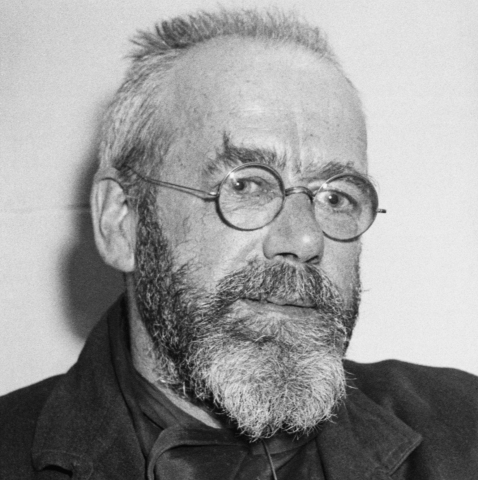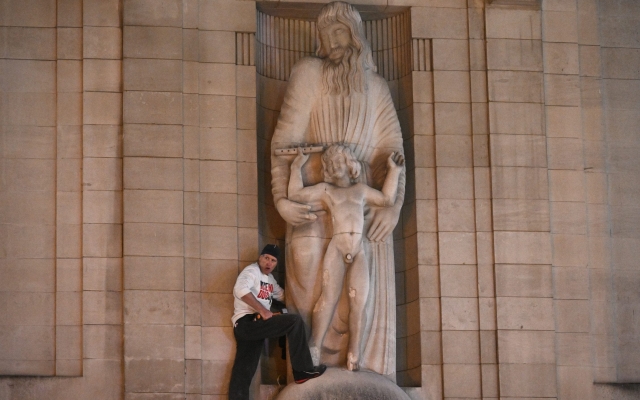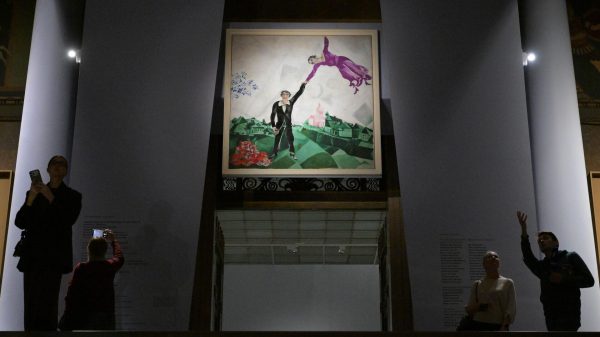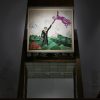This article, originally published in January 2022, has been updated
Now that the beating of statues was apparently legal under certain moral circumstances, it was inevitable that protesters would come for Prospero and Ariel. Protests against Eric Gill's sculpture of the two characters from Shakespeare's The Tempest, prominently displayed above one of the entrances to the BBC Broadcasting House in central London, raged as long as the people of Bristol protested against Edward. Statue of Colston. In the latter, occurring in the early hours of the morning, a man wearing a Spider-Man mask climbed the scaffolding surrounding Prospero and Ariel, who were in the process of being repaired, and hit the Grade II listed statue with a hammer. They also put up a sign criticizing the BBC.
Calls for the removal of Prospero and Ariel began in 1989 when Fiona McCarthy published a biography of Gill that said he raped his two daughters, had incestuous relationships with his sisters, and even had sex with his dog — facts. carefully ignored in other biographies that have appeared since Gill's death at the age of 58 in 1940.
The anti-Gill faction, which includes far-right activist Tommy Robinson, often seems to have little in common politically with the likes of the Colston Four, but like them, may indicate that decades of peaceful protests have been ignored. Last January, a man who also climbed Broadcasting House allegedly tried to damage the sculpture. reportedly told negotiators at the scene that if action had been taken by the time McCarthy's book came out, «I wouldn't be here, would I?»
One can understand why so many people object to our national broadcaster showing a statue of a naked child created by a sexual pervert. Of course, one could argue that Ariel is supposed to be a spirit and not a real child; and it is true that when Gill worked on the sculpture in 1932, the model for him was the 28-year-old actor Leslie French, who then played Ariel with the Old Vic at Sadler's Wells.
Ariel's contestant caused controversy from the start, long before Gill's deviances became public. Fiona McCarthy reported in her biography that «BBC executives, after previewing the carvings behind the canvas, asked Gill to make the organs more miniature». However, the bodies in question have generated controversy and have been the subject of discussion in the House of Commons.
 Artist and sculptor Eric Gill, who has committed various acts of incestuous sexual violence. Photo: Getty
Artist and sculptor Eric Gill, who has committed various acts of incestuous sexual violence. Photo: Getty
It is still unclear what exactly the statue represents. Gill was somewhat taken aback by his assignment, never understanding exactly what Prospero and Ariel had to do with broadcasting: «[Ariel's] very name has an affinity with broadcasting equipment» was the best he could come up with in an article for the Listener in 1933. .
He later said that «the figures … are as much God the Father and God the Son as Shakespeare's characters», while Fiona McCarthy suggested that they represent Gill himself and his adopted son Gordian: “father sacred, wise, protective, optimistic, closer to Gill's self-portrait than to Shakespeare's Prospero; the son is nervous, tense and impatient, but closely related to his father.”
It is possible that Gill intentionally wanted to create a buzz with his sculpture; he liked to shock for the sake of it. It was rumored that he did not wear shorts under his robe while working.
The question remains: what to do with the statue? One can sympathize with those who are nauseated by it, as well as take the view that there is no direct connection between its subject matter and Gill's horrific abuse of his daughters. If the BBC had succumbed to public pressure to take it down, one might reasonably ask when they were going to start removing Gill's other works from the premises: The Sower, also known as The Broadcaster, a striking sculpture of a male figure distributing worth corn. in the reception of the TV and radio center; and further reliefs of Ariel.
 The protester who damaged the statue in 2022. Photo: Leon Neal/Getty
The protester who damaged the statue in 2022. Photo: Leon Neal/Getty
And then what? Are we emptying the galleries of the work of one of the most revered British sculptors of the 20th century? Are we banning Gill Sans, the typeface invented by Gill, which has since been widely used by everyone from the BBC to British Railways?
Sasha Dugdale, who wrote a series of poems about Gill's daughters, says there are no quick answers. “Is the solution to remove his art from the collections, or label it as the work of the offender, or continue as before with your head in the sand? These questions deserve due consideration. Smashing statues with a hammer will not solve the deeper and more disturbing question of how to act in light of a flawed legacy, even if it is — and I have no doubt — a catharsis for a person.
This seems the most rational approach, but the current The resurgence of iconoclasm means that the BBC, which has tried to ignore the issue for so long, will now not have much time to think carefully about the fate of the statue: should it be removed or protected.
Of course, in one sense the BBC itself is partly to blame for the predicament it has found itself in at the forefront of our new culture of censorship: people can reasonably argue that if Beeb considers it appropriate to ban jokes about Yorkshiremen and references to Noël Coward's «colonialist» Reservoir Dogs and the English in the Radio 4 quiz show for fear of offending, how can he ignore those who are offended by the display of a naked child fashioned by a pedophile? Now the BBC may be sacrificing its own contribution to the polarization of the debate — unfortunately for those of us concerned about art censorship.

















































Свежие комментарии